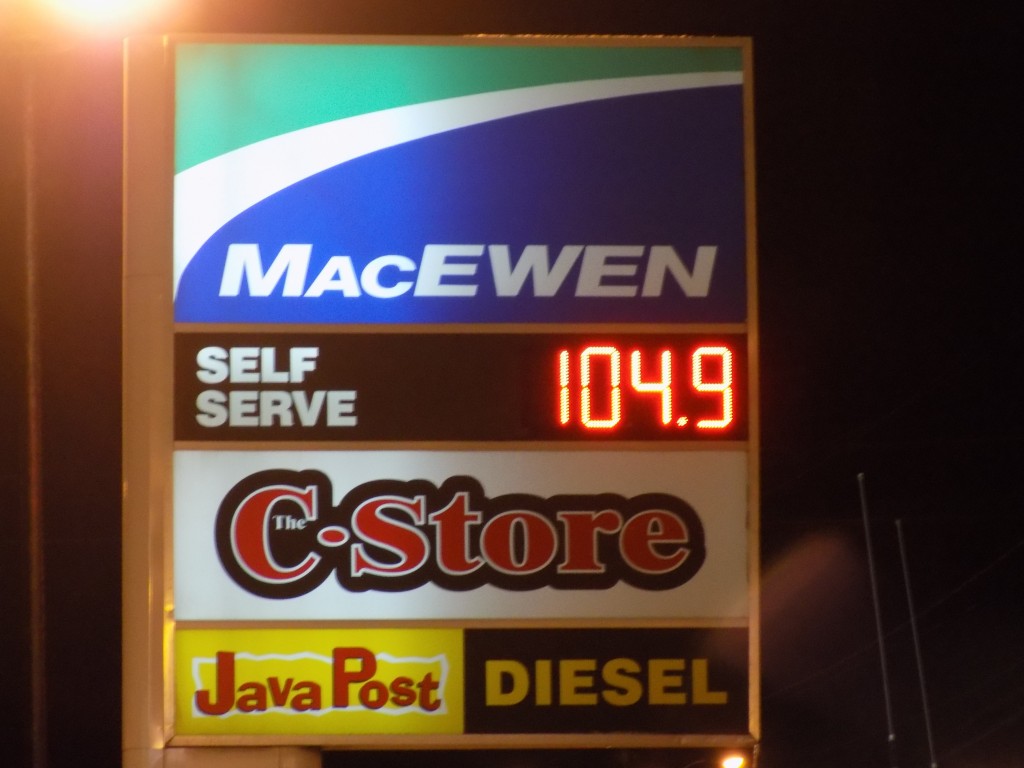Ontario starts cap and trade program

The cap and trade program in Ontario has led to an increase in gas prices. It was selling for $1.04.9 per liter at this gas station in Ottawa. Photo: James Morgan
It’s not a carbon tax, but it’s similar. On January 1, a cap and trade program to reduce greenhouse gas emissions took effect in Ontario. Cap and trade is a complicated, market-based approach to reducing air pollution and particularly, carbon dioxide or C02.
The amount of greenhouse gases polluters can release each year is capped at a certain amount, which will be reduced in following years. Pollution-causing companies are allowed to buy, sell, or trade special permits, also known as allowances or credits, if their emissions exceed the limit set by the government. These companies can buy the credits from other companies that have a surplus of credits from reducing their emissions. All companies operating in Ontario that emit 25,000 tons or more of greenhouse gases per year have to follow the new rules.
The idea behind cap and trade is to make greenhouse-gas causing fuels less competitive and more expensive for consumers. That means the cost of things like gasoline and natural gas has gone up for Ontario consumers. The Ontario government estimated that gasoline would cost about 4.3 cents more per liter in 2017. In late December 2016, prices in the Ottawa area were in the high 90 cents to $1 per liter range. During the first week of January 2017, they’ve been around $1.04 per liter. The province estimated that it will cost $5 more on average to heat a house with natural gas due to cap and trade.
The Canadian Taxpayers Federation, a generally conservative, small-government supporting, and anti-tax organization, is calling cap and trade an outright carbon tax and wants the government to scrap the program. The federation is also arguing that cap and trade will drive Ontario’s already high power rates even higher. The Ontario government insists that power rates will not go up further because 90% of Ontario’s electrical generation comes from non-fossil fuel sources. The Clean Economy Alliance, a broad coalition of industries, unions, and environmental groups, is firmly behind the program. They all united behind the government’s plan to introduce cap and trade when it was announced in 2015.
Ontario joined a cap and trade program that already existed between Quebec and California. The Auditor General, who is the province’s government efficiency and spending watchdog, released a report in November 2016 saying that of the projected 18.7 megatonnes of greenhouse gases that cap and trade is expected to reduce between Ontario, Quebec, and California by 2020, only 3.8 megatonnes will be in Ontario. However, Environment Minister Glen Murray insisted in a Toronto Star article that an additional 9.8 megatonnes will be saved in Ontario through “other initiatives.”
The adjustment to cap and trade in Ontario, and the controversies surrounding the concept are part of the larger arguments and debates about how to address climate change and reduce its impact while still maintaining a strong economy. The federal government in Canada is also planning to introduce a carbon tax of $10 per metric tonne that will take effect in 2018.
Tags: canada, environment, Ontario





.jpg)

